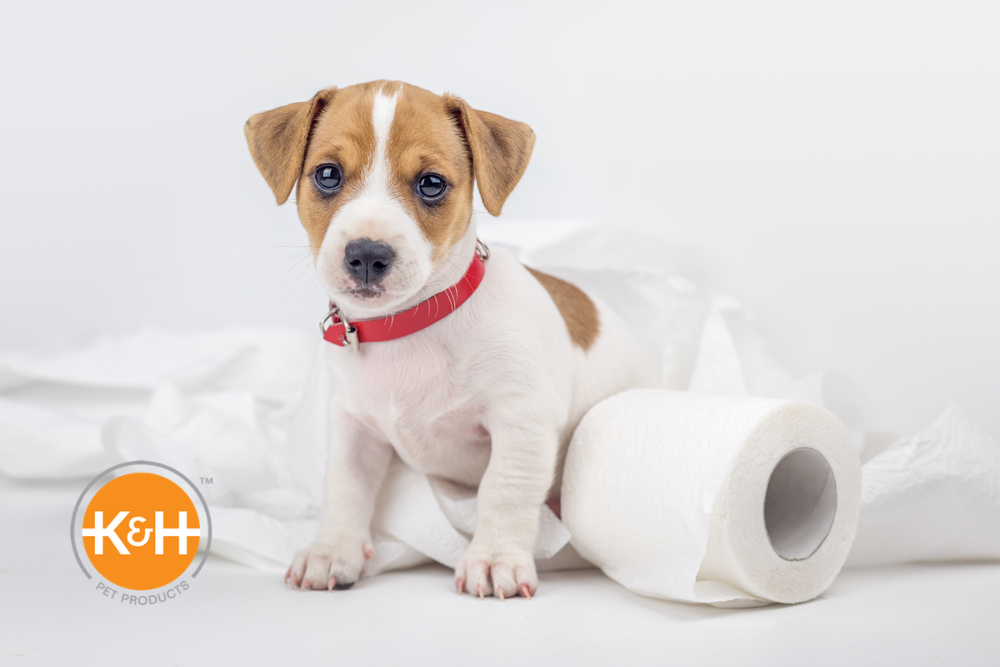
How Long Does It Take to House Train a Puppy?
How long does it take to house train a puppy? That's the million-dollar question. Training a puppy can be a daunting task for a good reason. Puppies don't always listen to instruction. In fact, most puppies can only handle about a five- to 15-minute training session before losing interest.1
Your puppy's age, physical readiness, and attention-span will determine how long house training will take. Puppies typically begin training between 8–12 weeks of age.

Anything is PAW-ssible!
To get house training off on the right foot, you want to ensure both you and your puppy achieve success. To ensure a positive experience for both of you, consider the following:
- When unattended, make sure your puppy is contained in a comfortable crate or gated enclosure. If your puppy is allowed too much freedom initially, “little surprises" will greet you at every turn. While puppy pads are popular and necessary at times, it's best to introduce the preferred spot for elimination as you begin training, hopefully outdoors.
- Encourage your puppy to go outside every 30 minutes to one hour. Don't freak out! This strict schedule is helpful for the first day or two. You can move to every two hours once you have established a routine.
- Reinforce activity using consistent verbal cues. Some puppy owners choose phrases like, “Let's go potty" or “Do your business."2 (As the proud pup parent, choose the phrase that works best for you.)
- After every meal and nap time, take your puppy outside. Establishing a meal schedule actually helps with the training process. And remember that puppies eat more frequently in the beginning.
- Watch your puppy for "tell-tail" signs: sniffing, walking around, walking towards the door or bell, whining, etc.
- Leash your puppy during training—this will help reinforce leash basics and help you guide your puppy to the preferred potty spot.
- Reward! Praise! Repeat! Offering a healthy treat, verbal praise, and affection effectively reinforces a positive training experience.
- Resist the urge to discipline or scold your puppy when accidents happen. Accidents will inevitably occur. However, shaming only instills fear—not remorse. Fortunately for you, there are many products available to help remove odors and stains.
CurTAIL the Training Timeline
That brings us back to the initial question, “How long does it take to house train a puppy?" Ultimately the answer depends on two key factors:
- The amount of time spent creating a consistent schedule
- The age and mental maturity of your puppy
Spoil-alert! Consistency and patience are crucial to success. If you put in the time, you're likely going to complete house training within four to six months. While this time frame may seem long, most puppies will acclimate to house training within a few weeks.3 However, to be considered entirely house trained, your puppy will need to be 100 percent accident-free—and this can take up to 12 months.
FUR-malize a Plan and Stick with It!
Whether you bell or door train, you need to make a decision and stick with it. In basic door training, you simply take your dog out the same door to eliminate. In contrast, bell training starts a little differently. Bell training requires you to:
- First, introduce the bell and its sound to your pet. Keep in mind that quieter bells are the best purchase because dogs hate loud noises.
- Next, train your dog to touch the bell on command.
- Once your dog is comfortable with the bell and can touch it on command, move the bell to the door.
- Lastly, your dog should ring the bell (on command) every time she needs to go out.
Shout HOWLelujah!
If you do your part, your puppy will conquer the house-training hurdle. Remember, puppies are . . . well, puppies. Young dogs require a lot of patience, kindness, and consistency.
On top of all the potty training, your puppy may also be missing her mother and littermates. Consider adding a Mother's Heartbeat Puppy Bone Pillow to your puppy's bed or crate. The pillow mimics the sound of a mother dog's heartbeat and can help to reduce anxiety or stress your pup may experience.
If you get discouraged, simply look at your puppy's sweet face and remember training is all new to her too. Together you can grow and learn new things. So, take a deep breath and grab the leash. You can do this!
1. Hoffman, Heather. “How to Potty Train A Puppy or Adult Dog." 30 June 2020, Pets.Webmd.com, https://www.petmd.com/dog/training/evr_dg_how-to-potty-train-your-dog
2. WebMD. “House Training Your Puppy."Pets.Webmd.com, https://pets.webmd.com/dogs/guide/house-training-your-puppy#2
3. Day, Laura. “Bell Training Puppy Techniques: Dos and Don'ts"Pupbox.com, 8 April 2019, https://pupbox.com/training/bell-training-puppy/
